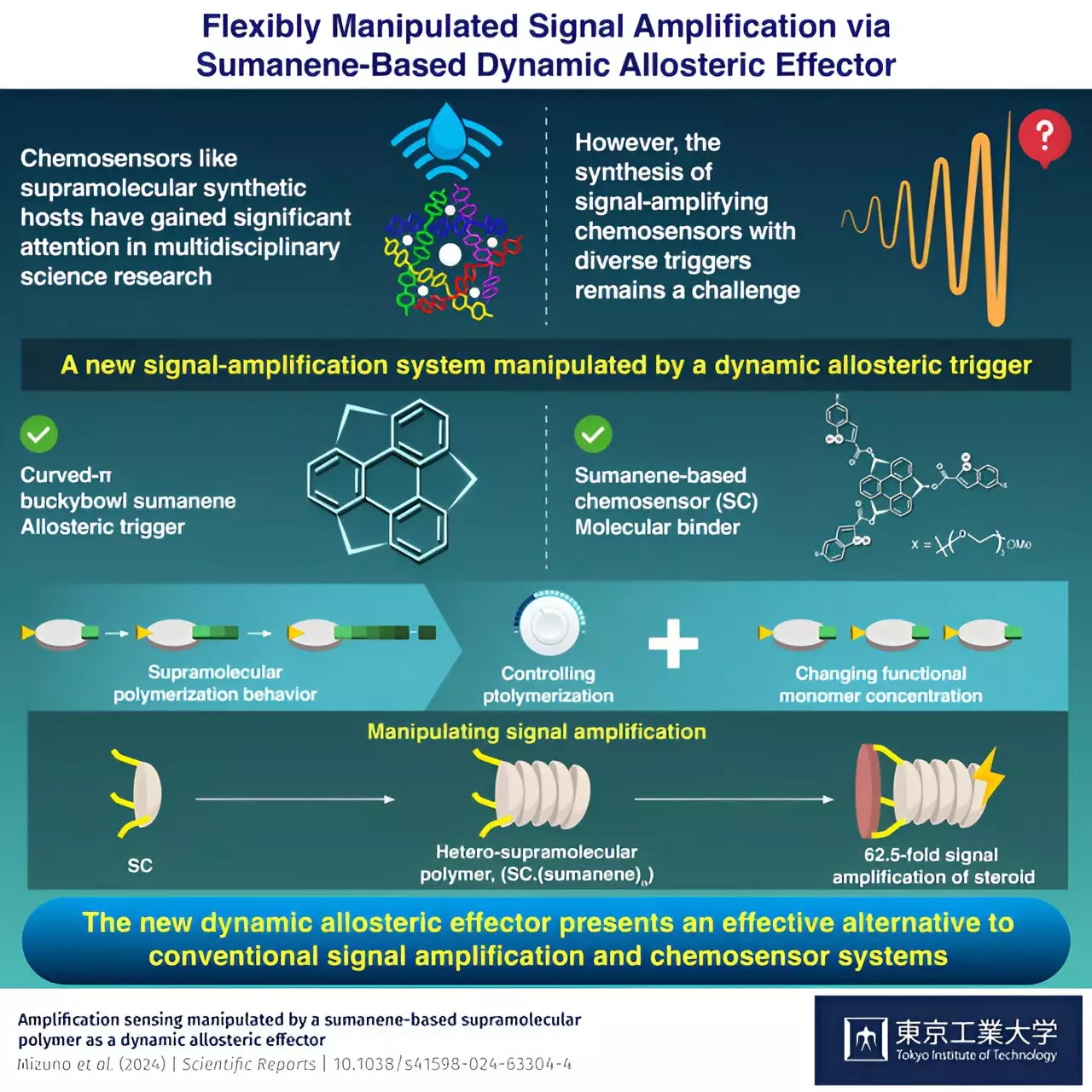In the ever-evolving landscape of molecular sciences, the demand for innovative chemosensors has never been higher. These sensors are at the forefront of numerous applications, ranging from environmental monitoring to biomedical diagnostics. Traditional chemical sensors often rely on the lock-and-key model, a foundational concept in molecular recognition. However, while effective, this model has inherent limitations, particularly concerning sensitivity and versatility. The quest for enhanced signal amplification—an essential characteristic for more responsive sensors—has posed a significant challenge for researchers. Recent breakthroughs from a group of academics at Tokyo Institute of Technology (Tokyo Tech) signal a paradigm shift in how we perceive and utilize chemosensors, particularly through the use of dynamic allosteric effectors.
Decoding Allosteric Mechanisms
To understand the revolutionary nature of the recent findings, it is crucial to delve into the concept of allosterism. In biological systems, allosteric modulation refers to the alteration of a protein’s function through the binding of an effector molecule at a site distinct from the active site, enhancing or inhibiting the signal. This principle is now being harnessed to enhance the performance of synthetic chemosensors. The team at Tokyo Tech, led by Associate Professor Gaku Fukuhara, has ingeniously applied this biological strategy to develop a novel signal-amplification system that integrates allosteric effectors, allowing for unprecedented sensitivity in chemosensing applications.
Innovative Polymerization Techniques
The unique approach adopted by Fukuhara and his team involves the use of supramolecular polymers formed by monomers that stack through non-covalent interactions. Sumanene, a curved molecule with distinct electronic properties, was employed as a key monomer in the polymerization process. The researchers discovered that the concentration of sumanene could be manipulated to adjust the polymerization degree and, consequently, the efficacy of the chemosensor. This versatile manipulative capability is remarkable, as the degree of signal amplification can be tailored to suit specific detection requirements.
Interestingly, the collaborative effort of Tokyo Tech with Osaka University yielded a system that not only showcases remarkable adaptability but also leverages the inherent qualities of sumanene to generate signal increases that were previously unattainable. By controlling the concentration of the monomer, the researchers achieved a staggering 62.5-fold signal amplification for sterols, a class of biologically significant molecules that present challenges for detection using conventional sensors.
Applications and Future Implications
The implications of this cutting-edge signal-amplifying system extend beyond mere academic curiosity. The exploration of steroids such as testosterone and corticosterone illustrates the potential real-world applications in pharmaceuticals and medical diagnostics. The enhanced detection sensitivity can facilitate earlier and more accurate diagnoses of various health conditions, potentially transforming patient care. Furthermore, the foundational principles laid out by this research provide a blueprint for developing sensors capable of identifying a wide array of challenging targets previously deemed difficult to recognize.
In addition to biological applications, this technology has ramifications in environmental sensing where minute concentrations of pollutants must be detected. The shift towards more responsive and adaptable sensors may lead to smarter environmental monitoring systems capable of real-time data collection, providing critical insights into ecosystem health and guiding regulatory measures.
The recent achievements at Tokyo Tech represent a significant leap forward in the field of chemosensing. By embracing the complexities of allosterism and incorporating innovative polymerization methods, researchers are not just improving old technologies; they are crafting entirely new avenues for exploration. This development beckons a future where chemical sensors are not only highly sensitive but also adaptable to a multitude of applications, paving the way for advancements in both technology and science. The integration of dynamic control mechanisms signifies a transformative moment in the realm of molecular recognition, advancing towards smarter solutions for society’s pressing needs.


Leave a Reply